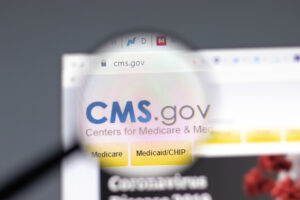Ron Iverson over at the National Association of Medicare Supplement and Medicare Advantage Producers (NAMSMAP) pointed out an interesting story in his newsletter recently about a New Jersey lawyer that is using statistical analytics to identify and target suspected Medicare fraudsters.
From Iverson’s piece:
Seems that John Mininno has identified five “red flags” that signal when a medical or healthcare company may be scamming Medicare. According to Healthcare Dive, “Using statistical analytics, Mininno looks for patterns in claims filings, identifies possible whistleblowers within the firm and encourages them to file a false claims lawsuit. In 2014, fraudsters bled $60 billion from Medicare, or about 10% of the program’s annual spending on 54 million beneficiaries.”
“Since 2007, the government has charged more than 2,300 providers with Medicare fraud, convicting 1,800 of them. But the problem shows no signs of abating.”
Really — that’s what the article says — no signs of abating. Hmmm… And here we thought “pay and chase” was being successful. The really intriguing thing for me is that here is a private citizen that seems to be doing CMS’ job for them. Of course, he gets paid for encouraging and initiating whistleblower lawsuits, but here’s how he did it. Mininno formed the National Healthcare Analysis Group to pour through Medicare claims data, searching for the five “red flags.”
1) Patient billings that are too regular with no variation in patient visits and follow-up visits always billed on the first allowable day.
2) Patients always requiring the maximum number of allowable visits.
3) Frequency of billing that doesn’t fit a bell curve, but clusters around thresholds for additional payment.
4) Providers who associate with practices or providers that have been investigated for fraud.
5) Facilities that get most of their referrals from physician owners.
So, what are the “takeaways” to this method? Perhaps citizen Mininno should be contracted by CMS to use his techniques to discover fraudsters. I’m certain that CMS has some of these similar procedures in their arsenal, but are probably prohibited from soliciting “whistle-blowers” to come forward with fraud cases, as the lawyer does. Or maybe a better solution would be for Congress to embrace our [NAMSMAP’s proposed] “bill” to stop fraud before it begins. Collecting $2-$4 billion a year in fraud, waste, abuse, overpayments, duplicate payments and the like, is pretty paltry in the face of CBO’s allegation of the $60 billion amount of annual national embarrassment.
WIRED published a story about Mannino’s efforts earlier this month, which notes that since 2007 more than 2,300 health care providers have been charged with fleecing Medicare, and more than 1,800 defendants have been convicted of felony offenses, ranging from claiming phantom services to performing unnecessary surgeries.
From the WIRED article:
Scams are run so often, by so many people, that dedicated government investigators can’t keep up: In 2014 prosecutions initiated by the government led to a mere 31 settlements yielding $88 million in fines. Luckily, there is another defense against Medicare fraud: whistle-blower lawsuits. Under the federal government’s false claims statute, any insider can sue a company that’s providing fraudulent services, on the government’s behalf. If the whistle-blower lawyers are successful, the plaintiffs collect 15 to 30 percent of the settlement as a bounty. In 2014 there were 469 of these health care fraud settlements—many involving huge pharmaceutical corporations and hospital networks—resulting in $2.2 billion in fines.
• Thoughts or comments? Please visit this new thread: Whistle-blower lawsuits target Medicare fraud












